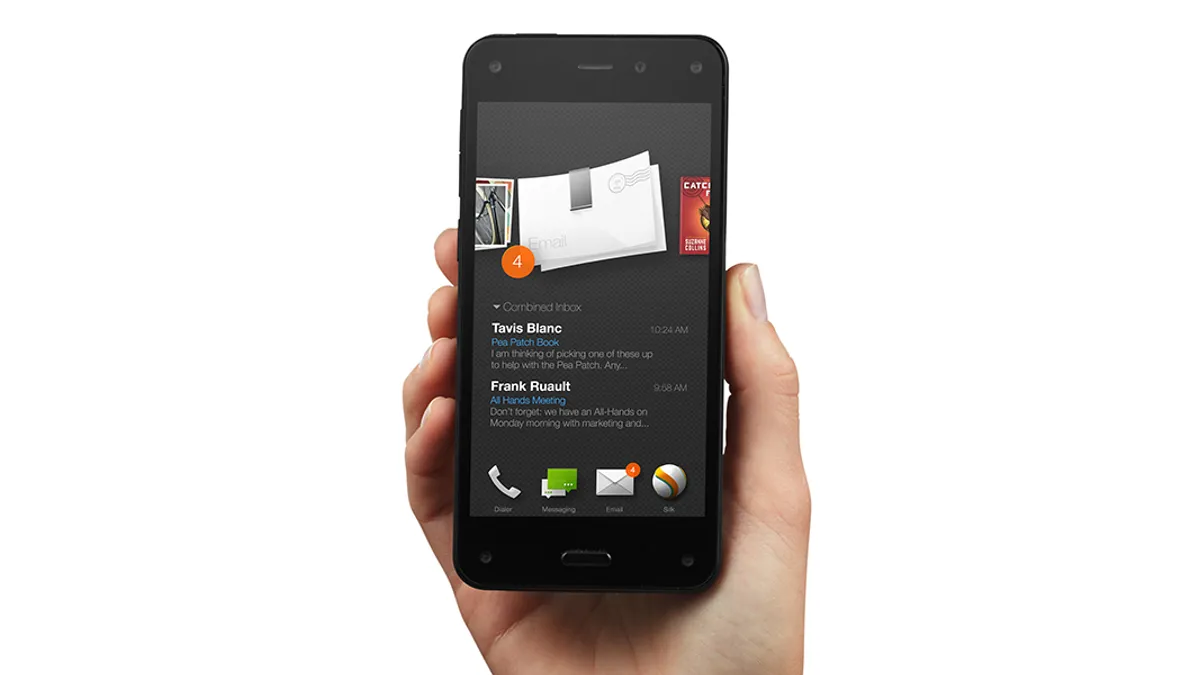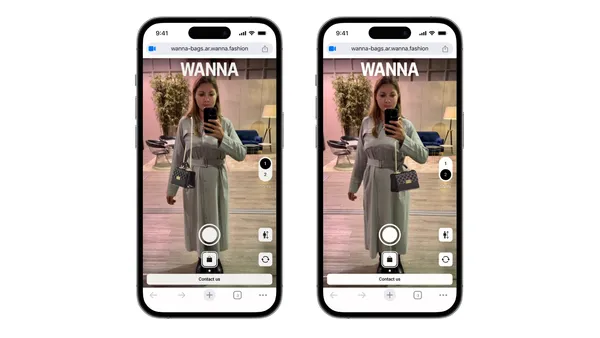Everyone laughed at Amazon CEO Jeff Bezos when he boasted that the e-retail giant was working on using drones to speed up delivery of its packages. At this point, that idea does seem pretty far off.
But last week, when Bezos unveiled the new Amazon Fire smartphone? Nobody laughed. At least, not anyone in retail.
Amazon’s Fire phone is designed to disrupt retail
If there’s one thing Amazon has proven to be good at, it’s disrupting the retail sector. Now, its new phone has a prominent feature that is designed to take advantage of other retailers’ brick-and-mortar stores by turning them, essentially, into Amazon showrooms.
The feature, “Firefly,” allows users to snap a photo of a product, then sends them buying options at Amazon. It’s the ultimate showrooming app.
That’s pretty bad, on its face, for retailers of any size that sell products that can be found on Amazon — and you can buy pretty much anything on Amazon.
But for many retailers, showrooming is old hat. Some experts say retailers should have no fear of Firefly because most have figured out (or should, and soon) how to combat this shopping habit, which is here to stay regardless of whose phone does what.
Plus, will Firefly fly with consumers? The capability is the manifestation of the kind of blatant push to showroom that Amazon encouraged at local booksellers in 2011, only to invite a much-publicized backlash. With a then-new app, Amazon had enticed shoppers with an added 5% discount if they scanned price codes on books at local stores but bought them at Amazon instead. It was a holiday-time promotion that helped fuel the e-retailer’s emerging Scroogelike reputation.
Who will buy Amazon’s phone?
It remains to be seen how many people would have much use for Amazon’s phone. The device has several much-hyped features, including a free year of Amazon Prime (a $99 value), preloaded Prime Music (a million songs, compared to competitors’ closer to 20 million), and other features that are actually not exclusive to the Fire. But the two features that stand out are Firefly and a groovy 3-D interface.
But observers say the phone suffers, too, from its high price tag at a time of falling smartphone sales, an exclusive contract with AT&T, and design elements that could come back to haunt it. Its price, in fact, is a curious departure from the e-commerce giant’s habit of undercutting its competition.
Its most fundamental flaw, however, is that the Amazon Fire is ultimately designed to delight Amazon itself, and not so much its users. For one thing, the element to which Amazon seems have given most of its attention is Firefly itself, a sign that the retail giant may have an inflated notion about how much mobile shopping consumers do, devaluing all the many other reasons why they have their smartphones in their pockets.
For privacy geeks, meanwhile, the phone may have introduced a whole new level of worry. As the New York Times technology writer David Streitfeld writes, “it [offers] a view of a mobile future that will be alluring to some but might repel others.”
That may not be the impact Jeff Bezos is looking for.
Regardless of how the market ultimately receives Amazon’s phone, it will likely take a while for it to actually get into many consumers’ hands, giving retailers time to line up any strategies to deal with the phone’s implications.
Would you like to see more retail news like this in your inbox on a daily basis? Subscribe to our Retail Dive email newsletter! You may also want to read Retail Dive's look at the key to in-store loss prevention.














